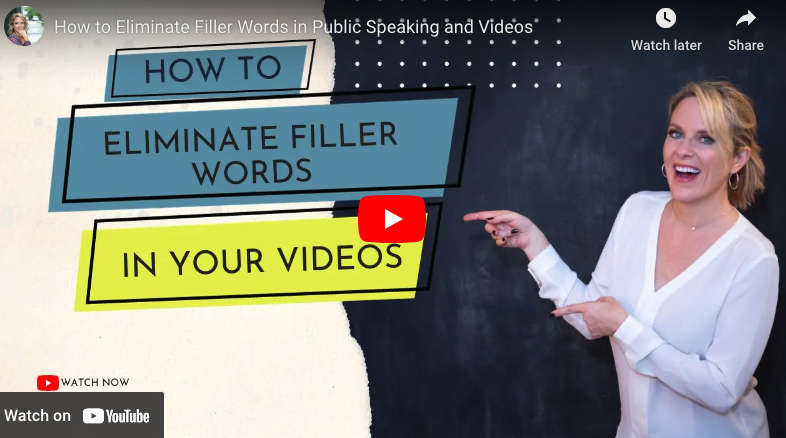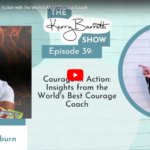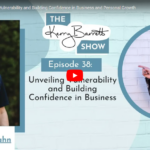
Discover the reason behind frequent filler word usage, particularly by women in live communication settings. Uncover valuable insights into how to address this and present yourself with confidence and clarity.
Transcript
If you’re struggling to remove filler words from your public speaking events or your on camera communication, this video is for you. A lot of people say that using filler words, you know, are deal breakers. I’m here to tell you they are in fact not.
Now if you begin to use them repetitively and to the point where they become a distraction, they can indicate to the audience that you are unsure about what you are speaking. However, the occasional use of an or an ah or a you know is a natural element part of human communication. It’s one of those idiosyncrasies.
And so as long as it’s not becoming distracting, as long as you’re not using one of those filler words every minute or in some cases, several times a minute, you’re going to be fine. Now there’s 1 word that can, in fact, be a deal breaker.
That word is like. You know, like, you know, it’s not so bad. It’s the like, that’s the deal breaker. And the reason that word doesn’t work is because there is an implication that a particular word is linked to people who are perhaps a little less articulate, a little less credible, perhaps a little more immature.
And it goes way back to your old you’ll know exactly what I’m talking about. The valley girl type of dialect or accent. Like, oh my god. Gag me with a gnarly spoon or whatever it is.
You know what I’m talking about. Like is associated with that type of persona. So like is a word that you wanna remove entirely. Fortunately, most of us are not beholden to that particular filler word. We’re more likely to use it, or you know. For women, there is a tendency to use those words in live communications.
And by live, I don’t mean a recorded video, I mean, in an in person speaking engagement or in a virtual or hybrid speaking engagement where you are having synchronous communication with whoever’s on the other side of the lens or the audience who’s down in the venue while you’re up on this stage. The reason that women have a tendency to do that.
There may be many reasons, but primarily, one of the reasons women have a tendency to use those words a little more, is that we also have a tendency in those environments to be interrupted more. And I know I’m painting with a broad brush, and there are going to be some who are very unhappy with me for saying this, but the facts don’t lie.
And the facts in this statistics show that women are 3 times more likely to be interrupted than their male counterparts. So we have a tendency to use those filler words as a vocal indicator to the audience that, hold on.
Don’t interrupt me. I’m not done thinking or I’m not done talking. I just need a second to gather my thoughts and figure out what the next thing is that I want to say. And so that’s why we use it.
The great thing about recorded video is that you don’t have a live audience to contend with. There is no one there that is going to be interrupting you. So recorded video especially allows you an opportunity to really hone your delivery and your message.
It does not mean that it has to be perfect, But keep in the back of your mind that people are much more likely to be forgiving in a live sort of environment. They expect those sorts of human frailties, if you will. They expect those sorts of human moments. None of us are perfect. We will all make mistakes.
However, in a recorded video they do expect perhaps a little more polish. There is an extra level of production and time that you’re allowed in order to create something that is recorded. So if you use a lot of filler words, not only do you expand your production in time by goodness knows how much because you’re trying to do a 1000000 takes and remove all of those filler words, but you also extends your post production time as well, meaning the editing, removing those filler words.
Or if it’s just audio, it’s not as big of a deal. If there’s video in this as well, which is what we’re talking about here, that requires a lot of editing because you have to actually go out and remove that component of your communication and then bring those 2 pieces of your speech together in a way that makes sense.
So here’s my tip for removing filler words. When you sense that you are about to utter some sort of nonvocal or nonverbal sound, meaning you’re not saying a word, you’re saying or or, you know, swallow the word back and do a physical movement with your body. It could be looking away.
It could be tapping your leg beneath the frame of the video like I’m doing right now, you can’t see it, but it creates a physical sensation when you desire to iterate some sort of nonverbal sound to hold your place. And as you’re becoming aware of when those moments are more likely to happen, then you can begin to remove them from your lexicon, from your vocabulary.
One of the easiest ways to do that as you become aware, is to open up your phone and riff for a minute, ad lib. Conversely, you can also take a script and try to recite that script for a minute. Go back and look at that 60 seconds, and notice where you populate with filler words and notice what’s going on in that moment.
Did you lose your plays? Are you struggling to find the next word? Did you go off script and you’re starting to ad lib? Is it a particular topic that you don’t feel super comfortable with? All of those things can encourage us to use filler words and sounds. And then go back and try and record that video again, aware of where you use the filler word or found and then try and remove it.
Do that 5 times in a row, and I guarantee you will see a difference from video 1 to video 5. This is one of the things I work on with my clients. And if you have questions, let’s schedule an on camera confidence strategy call, you can find the information in the comments below.




